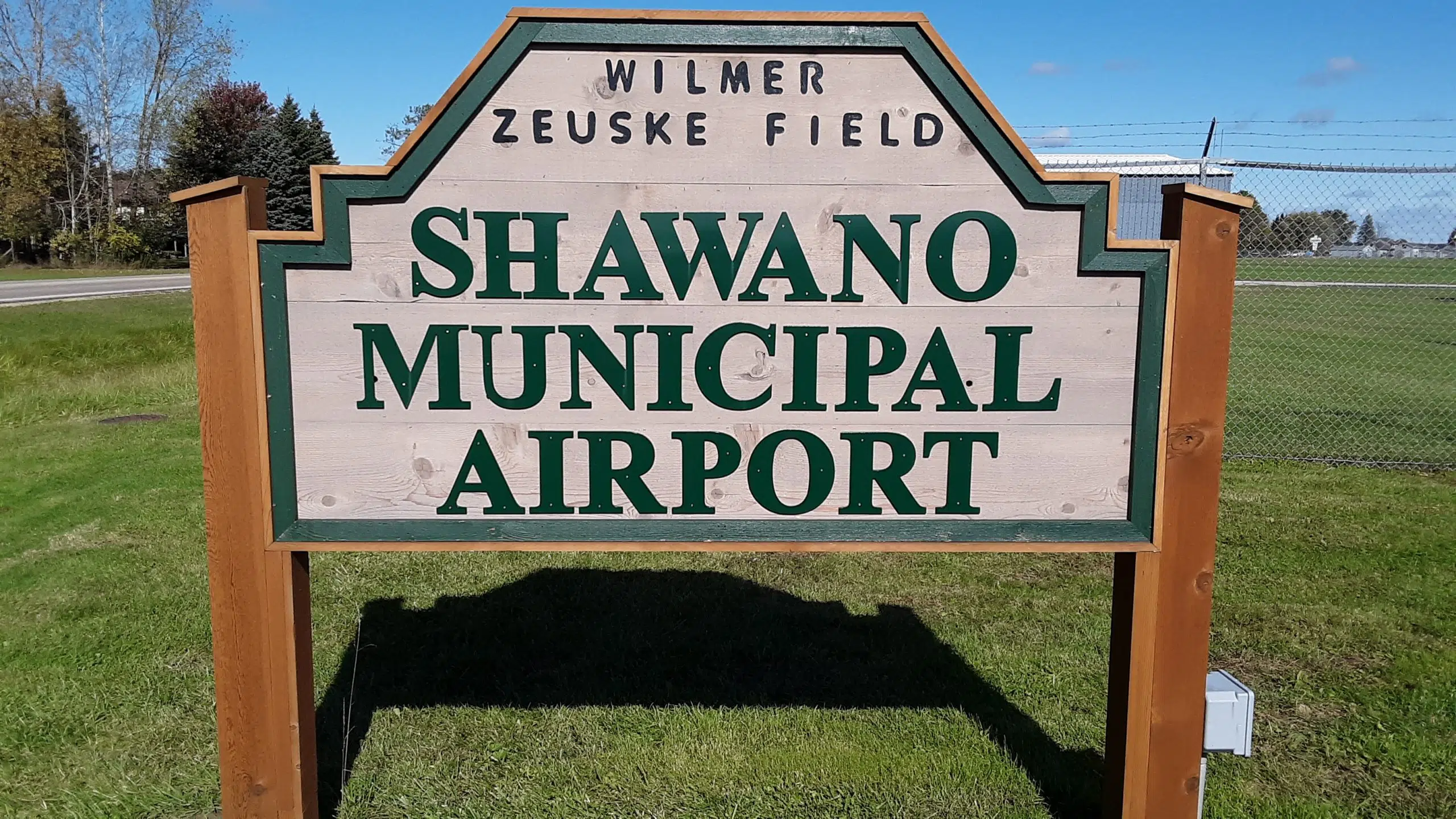On October 15, 2019 at 5:00 p.m. (reception starting at 4:00pm), the new
terminal building at the Shawano City/County Airport, 248 Airport Road, will
be dedicated during a public ceremony and flag raising.
 But it will be more than a dedication for a new terminal building at an airport that has served the
But it will be more than a dedication for a new terminal building at an airport that has served the
Shawano Community for decades; it will be a commemoration to the memory
of Shawano native and World War II hero, Sgt. Wilmer Zeuske, a member of
the United States Army Air Corps, the Flying Tigers and the First American
Volunteer Group (AVG).
The son of the late Mr. and Mrs. Charles Zeuske, Sgt. Zeuske, 21, was a gunner
on board a B-25C Mitchell, a medium bomber, when it was hit somewhere over
Burma on June 3, 1942 with an eventual destination of Kunming, China, the
headquarters of the AVG. While the rest of the crew survived, Zeuske was
killed by Japanese Zeros who gave chase following the bombing run. Zeuske
was the first Shawano area aviator to die in World War II. The B25C’s were to
be the first light bombers sent in support of the Chinese.
Wilmer Zeuske joined the United States Army Air Corps prior to the outbreak
of the War and was stationed for several months at McChord Field in
Washington State, where he was trained to be a radio technician, gunner and
bombardier.
Not long before his death, Sgt. Zeuske wrote his parents to tell them he was
going to be part of a large aerial contingent being sent overseas. He could not
tell them where. It ended up being China, and Burma via India.
Sgt. Zeuske and his Bombing Group of Six B25C’s, would become part of what
was called the First American Volunteer Group (AVG), a part of which later
became nicknamed the Flying Tigers, were essentially on loan to the Chinese
prior to the beginning of, and in the early part of the war, to defend that
country from the Imperial Japanese Empire. The initial AVG was comprised
entirely of volunteers and first began assisting the Chinese in 1940. With
additional aid from the Army Air Corps (including Zeuske’s Bombing Group)
and following Pearl Harbor, the AVG engaged the Japanese only weeks later,
and many of the pilots in the Flying Tigers were part of Doolittle’s Raiders who
bombed Tokyo in April of 1942.
The tragedy of the the bombing group did not end with Zeuske. Of the initial
six B25C’s sent to Kunming, only two made it. Three of the Six were lost in bad
weather only to crash in the mountains, the fourth to eventually crash after
running out of fuel.
Zeuske was not the only one from Shawano to become a member of the AVG;
Fritz Wolf joined the AVG at its beginning, was a Flying Tiger, and eventually a
war Ace in a P-40 Warhawk. Wolf was on hand in Kunming awaiting the
arrival of his friend from Shawano only to discover him dead on arrival in the
bottom gun turret.
The Flying Tigers were active from April of 1941 to July 4, 1942.
To commemorate the service done for our country, especially in the air, the
Shawano City/County Airport has taken the name Wilmer Zeuske Field.
Shawano City/County Airport, was founded in 1940 and chartered in April of
that year, holding its initial open house on July 6 th and 7 th , 1940, attended by an
estimated 5,000 people. Wilmer H. Zeuske Field was added to the name in
- Over the years the field has grown from what was once an 80-acre plot
of land into an airport of over 340 acres.
Wilmer Zeuske Field caters to many of the area’s businesses and private
pilots, and is a general aviation field capable of handling small business jets on
down. According to Clarence Schampers, the airport’s manager, Zeuske Field
is unique as it is a seaplane landing area, basically one of a kind in Wisconsin
because of the location of the airport on Shawano Lake.
As of January of this year, Wilmer Zeuske Field was the base for thirty aircraft:
twenty-five single engine, two multi-engines, a helicopter, and two ultralight
planes.














